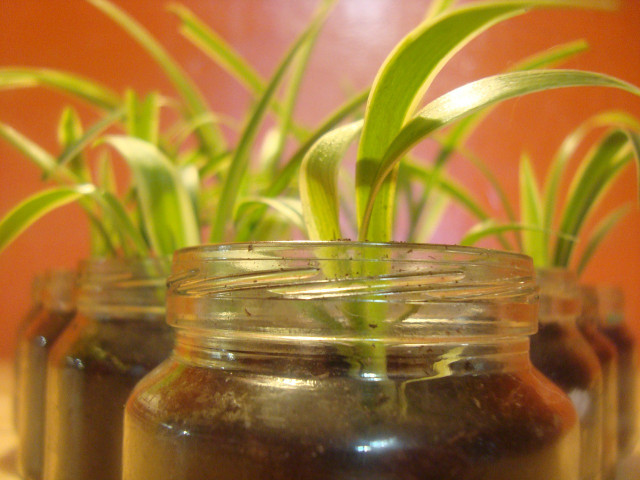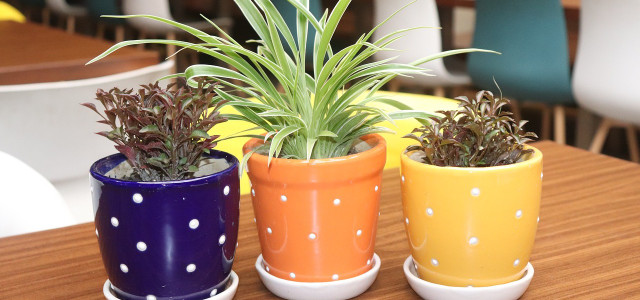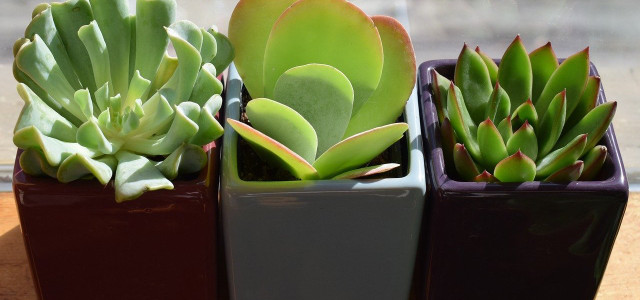Repotting spider plants is a necessary part of plant care. Follow these step-by-step instructions and give your spider plant the care it needs.
Spider plants (Chlorophytum comosum) are a gorgeous type of houseplant that, as unusual as it sounds, enjoy being in a rather cramped pot. Spider plants are very easy to take care of – and they’re pet-friendly! There are a few indicators which can help you determine when your plant needs a new space to grow in. If you want to know when the best time for repotting spider plants is, and how you can do it properly, you have come to the right place.
When to Repot Your Spider Plant

Most of the time, you will know by looking at their roots. These plants have very tuberous roots that help them store water, which is quite handy if you forget to water your plants while away. These roots, however, are very strong and they take up most of the planter space. Often, they can even crack your pot if you haven’t repotted it in a very long time! These roots, like the rest of the spider plant, also grow quite fast, so it is important that you keep an eye on them. If you see any of the following signals, it means it’s time to repot your spider plant:
- Your pot has cracked: This would be the most extreme of cases, where you will see that the roots became so strong and could not take up any more space.
- You can see the roots above the soil: Again, this means that they are looking for more space for expansion.
- The roots have grown outside the drainage holes – the pot is too small, and the roots are growing out the bottom.
The best time for repotting spider plants is in the spring, as it’s the start of their growing season. This will give them plenty of space to grow, and the nutrients in the new soil will help give them the boost they need.
Repotting Spider Plants: Follow These 5 Steps



Once you’ve detected that it’s time for repotting your spider plant, follow the next five steps to ease your plant’s transition:
- Find a new pot and some organic soil. You will want to pick a new pot that is one size bigger than your current pot. Don’t pick a massive new pot because your spider plant will not like it, and make sure your pot has drainage holes – they are always a must have.
- Gently remove the plant from the current pot, remove the old soil, and rinse the roots. For this second step you will want to take as much old soil out as possible so that your plant can have new, nutritious soil from now on. Once you’ve done that, rinse the roots with some water.
- Transfer your plant to the new pot: Add some soil to the bottom of the pot, place the plant in the middle, and start filling it up with soil around it. Use some water to ensure the soil is moist, but not wet.
- Press the soil lightly to make sure your plant stays firm, and the soil is settled. Make sure the roots are covered.
- Water your plant and place it somewhere with bright indirect light. Spider plants can handle low light conditions, but they thrive when they are getting indirect light.
Caring For Your Spider Plant



Spider plants are one of the easiest houseplants to grow and care for. They are a great option to have if you are new to gardening or if you often forget to be consistent with plant’s care, since they can tolerate non-ideal circumstances. Here are a few tips to help you keep your spider plants healthy and thriving:
- One thing that spider plants can’t handle is very wet soil. Therefore, it’s important to have a pot with drainage holes and to be careful not overwater it to avoid moldy soil and root rot.
- We recommend you pick an organic, peat-free soil that doesn’t contain any harmful chemicals. Peat soil has an acid component that could harm your plant and is very unsustainable.
- Fertilize your spider plant once a month. We recommend you use a peat free fertilizer, and the best option is to make your own homemade plant food to avoid any unwanted chemicals.
- Water your spider plant once a week, always making sure that the soil is dry before watering.
Read on:
- Water Propagation for Beginners: A Step by Step Guide
- Repotting a Pothos: 3 Telltale Signs and How-To
- How to Compost Leaves: 3 Ways
Do you like this post?








